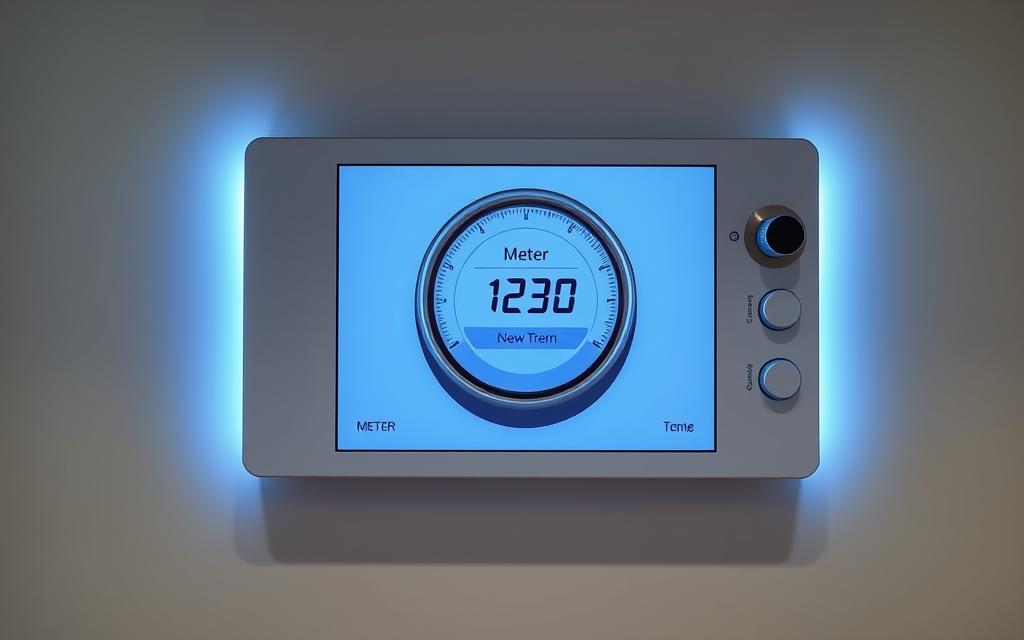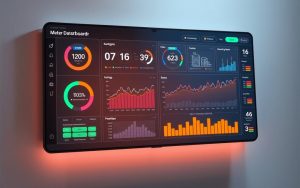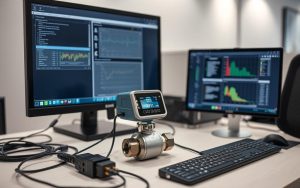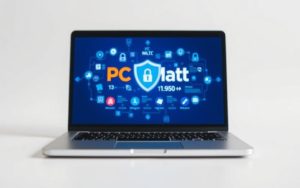Table of Contents
Managing meter readings efficiently is crucial for businesses. Accurate data ensures precise billing and optimizes resource usage. This guide simplifies the process of integrating readings with enterprise systems.
Modern platforms like Configuration Manager streamline workflows. Companies such as Woodgrove Bank rely on these tools for seamless monitoring. Before starting, verify hardware compatibility and user permissions.
Effective software bridges the gap between physical devices and digital reports. Interfaces like Meter Reader (MR) systems enhance utility management. Follow best practices to ensure smooth computer processing of large datasets.
1. Preparing Your System for Meter Data Input
Efficient workflow starts with verifying compatibility across devices and applications. Proper setup reduces errors and ensures seamless integration with enterprise platforms like Configuration Manager. Follow these steps to optimize your system.
Verify Software and Hardware Compatibility
Begin by confirming your software supports .exe monitoring and runs the current branch version. Legacy systems may require specific protocols, such as the OneTouch UltraMini for medical devices.
For hardware, test USB-to-serial converters. Incompatible adapters disrupt communication between physical meters and digital interfaces.
| Component | Requirement | Example |
|---|---|---|
| Software | Current branch version | Configuration Manager 2111 |
| Hardware | USB-to-serial support | Tripp Lite U209-000-R |
Configure Client Settings for Metering
Enable metering in Configuration Manager with these steps:
- Navigate to Administration > Client Settings.
- Set a 7-day collection cycle for consistent reporting.
- Deploy custom settings to target devices.
Woodgrove Bank’s dual Office version monitoring demonstrates the value of precise client configurations.
Set Up Reporting Services
Integrate SQL Server Reporting Services for automated dashboards. Define thresholds to flag anomalies—10% for warnings, 100 rules max for auto-creation.
Vendor-specific file naming conventions, like those in MR Interface systems, streamline data aggregation.
2. Configuring Software Metering Rules
Accurate tracking depends on well-defined software metering rules. These protocols standardize how systems capture and process meter readings. Proper configuration minimizes errors and enhances reporting efficiency.
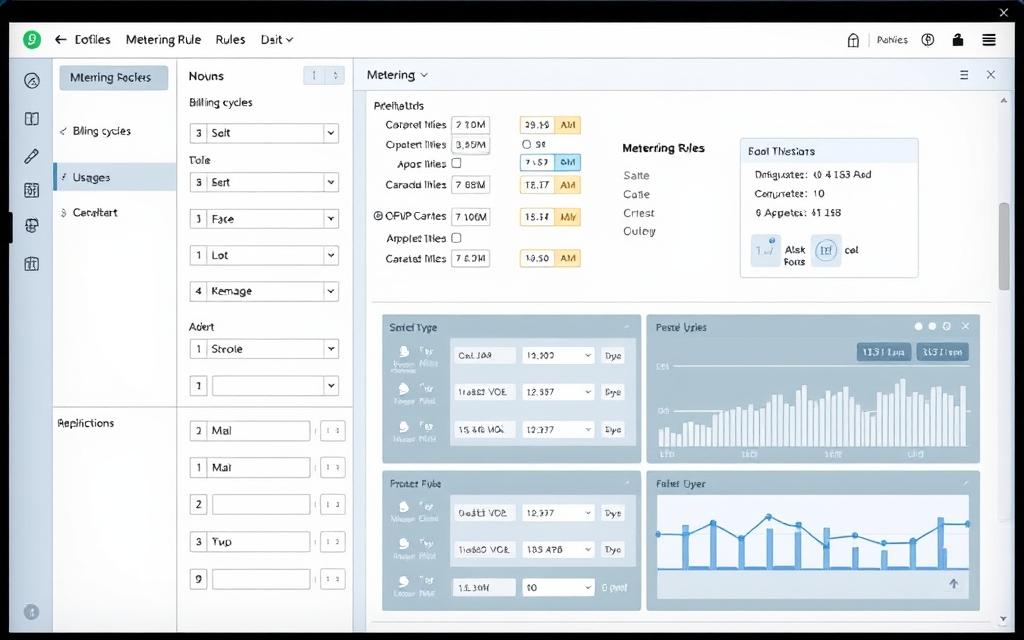
Enable Metering in Configuration Manager
Activate metering in Configuration Manager to monitor application usage. Navigate to Administration > Client Settings and enable the feature. Set collection cycles (e.g., 7 days) for consistent data aggregation.
- Auto-rule generation: Disabled by default; enable via usage inventory.
- Security: Encrypt transfers to protect sensitive information.
Define File and Version Parameters
Specify filenames with wildcards (*.exe) for flexible monitoring. Use the ? wildcard for single-character variations (e.g., v1?.exe).
Example: Monitor woodgrove.exe with Original File Name verification to avoid conflicts.
Set Thresholds for Data Validation
Implement alerts for 15% consumption variances. Configure retention policies:
- 90 days for raw data.
- 270 days for summarized reports.
Block wildcards in filename fields to prevent parsing errors. These steps ensure reliable interface performance.
3. Executing Meter Data Input
Streamlining the transfer of readings ensures accuracy and efficiency. Modern platforms simplify this process with automated workflows and validation checks. Follow these steps to integrate readings seamlessly with your enterprise systems.
Generate and Download the Meter File
Start by selecting service codes and account filters in your software. Include inactive accounts if needed for comprehensive reporting. Systems like MR Interface offer vendor-specific templates for standardized formatting.
- Route filtering: Narrow down readings by geographic zones or billing cycles.
- File formats: Choose between proprietary MR layouts or generic CSV exports.
- Time stamps: Ensure synchronization with 7-day collection cycles for consistency.
Input or Collect Meter Readings
Gather readings through manual entry or automated vendor integrations. Medical devices may require hex-to-decimal conversion for compatibility. For bulk processing, prioritize route-based collections to manage 1,000+ accounts efficiently.
“Serial communication protocols like Lifescan ensure seamless transfers for glucose monitors and similar devices.”
Upload and Validate Data in Software
Import files into your platform using drag-and-drop or batch upload features. Automated checks compare current readings against historical information to flag discrepancies. Address force threshold rejections immediately to prevent billing delays.
| Validation Step | Action |
|---|---|
| Consistency Check | Match readings with 15% variance thresholds |
| Format Verification | Confirm MR template compliance |
For advanced troubleshooting, reference our guide on electronic meter integration. This resource covers connection protocols and error resolution techniques.
Conclusion
Security and accuracy define successful meter management. From hardware checks to validation thresholds, each step ensures reliable information flow. Businesses like Woodgrove Bank cut costs by identifying unused resources through weekly reports.
Regular policy reviews prevent data injection risks. Analyze protocols for new meter models to future-proof systems. Combining MDM with Configuration Manager software offers full visibility.
Implement automated rules for real-time alerts. Align retention policies with privacy laws. This approach turns raw readings into actionable insights—just like Woodgrove Bank’s efficiency gains.
FAQ
What software is best for managing meter readings?
Popular options include EnergyCAP, eMeter, and Itron Enterprise Edition, which offer robust features for tracking, analyzing, and reporting utility data.
How do I ensure accurate data collection from meters?
Regularly calibrate devices, use automated data loggers, and validate readings against historical trends to minimize errors.
Can I integrate smart meters with existing software?
Yes, most modern platforms support AMI (Advanced Metering Infrastructure) and IoT-enabled devices for seamless data transfer.
What file formats are compatible for uploading readings?
Common formats include CSV, XML, and Excel, though specific requirements depend on the software provider.
How often should meter data be updated in the system?
For billing or compliance, monthly updates are standard, but real-time monitoring may require daily or hourly syncs.
What security measures protect meter data during transfer?
Encryption protocols like TLS/SSL, role-based access controls, and audit logs ensure data integrity and prevent unauthorized access.


